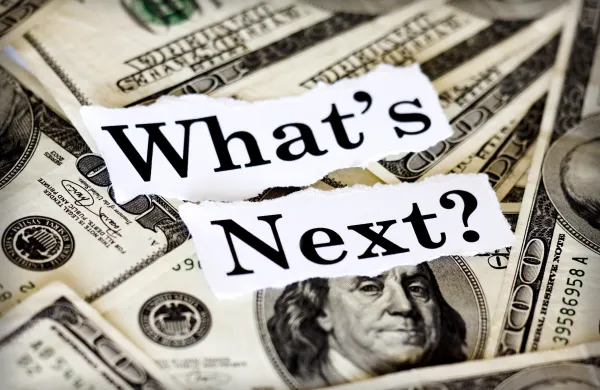One of the most overlooked aspects of the great 1990s stock bubble was that it fueled a golden age of corporate mergers and acquisitions. Using their grossly overvalued shares as currency, companies helped drive U.S. M&A volume to a record $1.6 trillion in 1999. By the end of 2002, after a three-year bear market, that total had plummeted by more than 70 percent, to $471 billion.
Merger activity probably won't soon revisit bubble-era highs. Nor should it. After all, plenty of companies are still trying to overcome nasty cases of indigestion from mega-acquisitions made during that era. Just ask Time Warner about its merger with America Online. But after stocks finally had an up year in 2003 and the economy began to improve, investment bankers and other M&A experts expected companies to return to the negotiating table en masse.
Things haven't exactly worked out that way. Merger activity rebounded from its 2002 low, reaching $569 billion in 2003. At $509 billion through mid-August, it's on pace to rise 47 percent in 2004. But corporations account for a much smaller portion of this volume than they have historically. Instead, private equity firms -- those masters of the leveraged buyout who dominated the 1980s merger scene -- are driving much of the increase.
So far in 2004, 16 percent of all U.S. M&A has involved a private equity firm as the buyer. That's up dramatically from 9.7 percent in 2003, 7.2 percent in 2002 and less than 2 percent in both 2001 and 2000, according to New York research firm Dealogic (see graph). Executives at several private equity firms, often called "financial buyers" because they acquire companies solely to sell them later for a profit, say they've been purchasing at a more rapid clip lately and have encountered hardly any competition from corporations, or "strategic buyers."
To be sure, there have been several landmark corporate combinations this year, such as J.P. Morgan Chase & Co.'s $57 billion acquisition of Bank One Corp. and Cingular Wireless's $47 billion purchase of AT&T Wireless. But these and the eight other transactions that make up the ten biggest deals so far this year together account for 25 percent of announced M&A volume. That level is "high by historical standards," according to a report by Goldman, Sachs & Co. analysts James Hoeg and Jonathan Tukman.
Much of the daily drumbeat of deals is being set by financial buyers. Notables include Madison Dearborn Partners' $3.7 billion acquisition of Boise Cascade Corp.'s paper and forest products unit, and CenterPoint Energy's $3.6 billion sale of its Texas Genco power-generating subsidiary to several LBO firms, including Blackstone Group and Kohlberg Kravis Roberts & Co.
"There are strategic buyers out there, and they are starting to get back into the game, but the overall sentiment is, 'Jeez, where the heck have these guys gone?'" says Richard Moreau, a vice president at $1 billion-in-assets private equity shop Harvest Partners. Harvest seeks to make two to three acquisitions annually. By mid-August it had already bought three companies, including baby products manufacturer Evenflo and bus maker New Flyer Industries.
Several factors underlie this trend. Flat stock prices this year have inhibited corporations, who have less buying power in stock-financed deals. Moribund stocks also mean that sellers may wait to snag higher prices in a rising market. And executives may be wary of big strategic moves amid questions about whether the U.S. economy can sustain its recovery, and uncertainty about the impact of November's presidential election and continuing geopolitical unrest on the markets.
Those factors aren't inhibiting financial buyers, who are flush with cash from stock-weary investors and benefiting from hot debt-financing markets. As interest rates rise and leverage becomes more expensive, however, this advantage will wane. Then the question of whether corporations will return fully to the M&A market will largely be up to the stock market.





